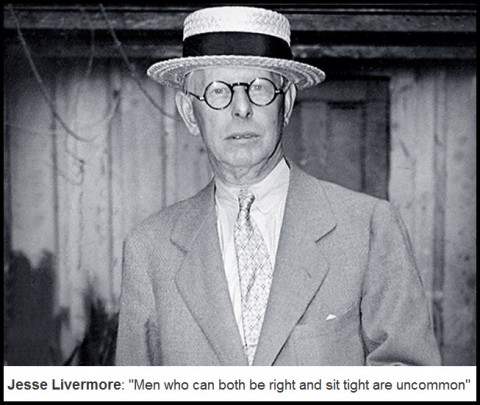The recent Resource Investment Conference in Vancouver may well have set a new attendance record for that venue. So many company booths filled the display area that they overflowed onto the confines of the massive Vancouver Convention Centre West. I was asked to speak in place of Kitco’s Jon Nadler, who was unavoidably absent from the conference. My topic was entitled The Precious Metal’s BIG Money Train is Leaving the Station…Are You Ready? The thrust of my talk was not whether a major new leg up is imminent, or even a mania phase like the dot-com bubble of the late 1990s. The more immediate concern is that anyone who intends to ride what many of us have long believed will become the Mother of All Bull Markets had better establish and hold onto a core, non-trading position, and sooner rather than later. These holdings should be kept in the portfolio until the owner makes a subjective decision that the precious metals bull is either over or on its last legs.
Trying to play top-caller, going 100% into cash before a “reaction,” then attempting to get “all-in” again before prices blast off, is a sure-fire way to get knocked off the precious metals bull, landing on one’s back, and most likely staying there for the duration. Granted, there is nothing wrong with trading some holdings into market strength and then looking to buy back on a reaction. Doing so is part art and part science – and, yes, it’s not always possible to get back in at a lower price. However, the greatest traders out there – the iconic Jesse Livermore, the late great Sir John Templeton, legendary goldmeister Jim Sinclair and his father, Bert Seligman – all sought to lower their cost basis by carefully selling certain rallies and buying certain declines. In Edwin Lefevre’s classic book, Reminiscences of a Stock Operator, Jesse Livermore noted that “Men who can both be right and sit tight are uncommon…” And later, “Don’t try to sell and buy back (core positions) on reactions in a bull market.”
What Losers Do…
There are two things no one can afford to experience in a bull market: the complete loss of one’s capital, or the loss of one’s core position; for to do so is the financial kiss of death. Stewart Thomson eloquently states the rationale thus: “Only losers try to trade their way through a bull market with core positions. They end up at the end of the bull with nothing. Winners grip core positions tighter in corrections and add to positions.”
Lose your capital and you won’t have the monetary means to play the game. Lose your position while you watch prices rocket up and away from where you “called the top,” and you will almost certainly have lost the psychological capital necessary to get back into the game – probably for the rest of the bull market. There’s a saying in mining company circles about being present in order to take part in a business decision: “If you’re out of the room, you’re out of the deal.” So, if you want to stay “in the room” you had better be diligent about holding onto your core positions as long as you can.
(If you’d like to have Rick’s Picks commentary delivered free each day to your e-mail box, click here.)


Mercurious,
Absolutely right! EVERYONE should always be adding to their PM holdings. I’m greedy and do most of mine with mining shares, but I still make it a point to buy physical when I can. The other day, I bought a 1/10 oz. gold eagle and a 1 oz. silver eagle. Not much at all, but it adds up.
I agree, keep some cash for expenses (hopefully never more than $1,000 in your checking acct.) and the rest in metals.
Believe me, on the day they re-issue a new currency or put the banks on holiday, you’ll be happy NOBODY can touch your physical, which probably will have just shot through the roof in terms of street value.